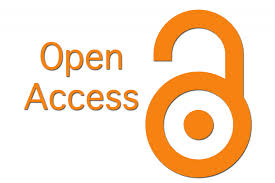ANALYSIS SUPPLY CHAIN LOBSTER CATCH RESULTS PANULIRUS SPP AT THE BOJONGSALAWE FISH AUCTION PLACE (TPI) IN PANGANDARAN DISTRICT
Abstract
Lobster is one of the fisheries commodities with high economic value in Pangandaran Regency, especially at the Bojongsalawe Fish Auction Place (TPI). The high demand for lobster makes it one of the main sources of income for local fishermen. However, the efficiency of the lobster supply chain is still a challenge, especially in the aspects of product flow, information, finance and marketing margins at each distribution stage. This research aims to analyze the lobster supply chain at TPI Bojongsalawe using a quantitative descriptive approach. Data was obtained through primary and secondary analysis using interview methods and direct observation of fishermen, TPI managers, large traders, small traders and restaurant owners. The research results show that the lobster supply chain at TPI Bojongsalawe consists of seven chain structures which have different marketing efficiencies. The second marketing chain has the lowest marketing margin of IDR 80,000/kg or 40.47%, with a value fisherman share the highest was 76.34%, thus providing greater profits for fishermen. On the other hand, market share The largest was found in the seventh chain, where restaurants buy lobsters directly from fishermen, with a percentage reaching 58.49%. The main obstacles in the lobster supply chain include stock instability due to changes in weather conditions, significant price fluctuations, and a payment system that is not always done in cash. This has an impact on income uncertainty for fishermen and other market players. Therefore, a more efficient supply chain management strategy is needed, including the implementation of a centralized information system and increased coordination between market players. In this way, it is hoped that lobster distribution can be more optimal, fishermen's welfare will increase, and price stability will be better maintained.
Keywords
References
Anwar, S. N. (2011). Supply chain management (Supply Chain Management) concept and essence.
Apurwanti, E. D., Rahayu, E. S., & Irianto, H. (2019). Shallot supply chain in Bantul Regency using the food supply chain networks (FSCN) approach.
Arifianto, S., & Rusadi, U. (2016). Empowerment of traditional fishermen through communication media and ICT on the South Coast of Java. Telematics and Information Society, 4(1), 13-26.
Azzaino. (1991). Introduction to agricultural trading systems. Department of Socio-Economic Sciences, Bogor Agricultural Institute.
Bowersox, D. J., Closs, D. J., Cooper, M. B., & Bowersox, J. C. (2020). Supply chain logistics management. McGraw-Hill.
Chopra, S., & Meindl, P. (2007). Supply chain management: Strategy, planning & operation (pp. 265-275). Gabler.
Gunawan, R. I., & Bakhtiar, D. (2023). Description of lobster catching in the Baai Island area, Bengkulu City. Indonesian Maritime Affairs and Fisheries Journal, 3(1), 36-44.
Haj, M. H., Zulbainarni, N., & Novindra, N. (2023). Pearl lobster marketing study (P. decorated) in South Sulawesi Province. Journal of Maritime and Fisheries Socioeconomics, 18(1), 75-86.
Hanafiah, A. M., & Saefuddin, A. M. (1986). Agricultural product trading system. Publisher UI
Handayati, Y., Simatupang, T. M., & Perdana, T. (2015). Agri-food supply chain coordination: The state-of-the-art and recent developments. Logistics Research, 8, 1-15.
Haryono, F. E. D., & Ambariyanto, A. (2018). Genetic biodiversity of spiny lobsters (Panulirus spp.) from coastal waters of Southern Java, Indonesia. Indo Pacific Journal of Ocean Life, 2(2).
Haryono, F., Hutabarat, S., Hutabarat, J., & Ambariyanto, A. (2015, December). Nutritional value of spiny lobsters (Panulirus sp.) from Southern Coast of Java. AIP Conference Proceedings, 1699(1). AIP Publishing.
Heizer, J., & Render, B. (2008). Operation management (9th ed.). Pearson Education.
Hidayat, A., Andayani, S. A., & Sulaksana, J. (2017). Corn supply chain analysis (Case study on hybrid corn supply chain (Zea mays) in Cicurug Village, Majalengka District, Majalengka Regency). Agrivet: Journal of Agricultural and Animal Husbandry Sciences, 5(1).
Indrajit, R. E., & Djokopranoto, R. (2002). Supply chain management concept. Grasindo.
Kotler, P., & Keller, K. L. (2016). Marketing management (15th global ed.). Pearson.
Lambert, D. M., & Cooper, M. C. (2000). Issues in supply chain management. Industrial Marketing Management, 29(1), 65-83.
Marimin, M., & Maghfiroh, N. (2010). Application of decision making techniques in supply chain management. IPB Press.
Moleong, L. J. (2019). Qualitative research methodology. PT Teen Rosdakarya.
Nazir, M. (2009). Research methods. Ghalia Indonesia.
Schroeder, G. R. (2007). Operation management: Contemporary concept and cases (3rd ed.). McGraw-Hill.
Sekaran, B. R. (2010). Research method for business: A skill-building approach (5th ed.). John Wiley & Sons.
Sugiyono. (2013). Quantitative, qualitative and R&D research methods. Alphabet.
Sugiyono. (2012). Understanding qualitative research. Alphabet.
Tjiptoherijanto, P. (2001). Projections of population, labor force, workforce, and the role of trade unions in improving welfare. Development Planning Magazine, 23, 1-10.
Vorst, V. D. (2006). Performance measurement in agrifood supply chain network: An overview. In Quantifying the agrifood supply chain (pp. 15-30). Springer.
Wiyono, W. (2005). The role and strategy of fisheries cooperatives in facing the challenges of developing TPI and PPI in Indonesia, especially on the island of Java. International Seminar on Dynamic Revitalization of Fishing Ports and Capture Fisheries on the Island of Java in the Development of Indonesian Fisheries.
Yofa, R. D. (2016). Application of supply chain management concepts to poultry products. Agro Economic Research Forum, 34(2), 143-161.
DOI: http://dx.doi.org/10.15578/ifrj.1.1.2025.%25p

Indonesian Fisheries Research Journal is licensed under a Creative Commons Attribution-ShareAlike 4.0 International License.
View My Stats
p-ISSN 0853-8980
e-ISSN 2502-6569




